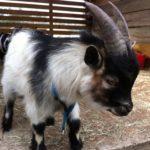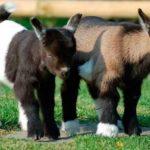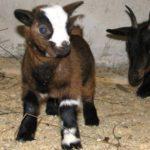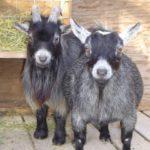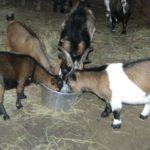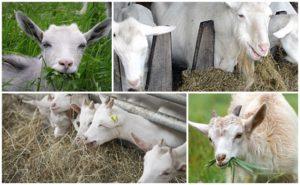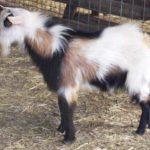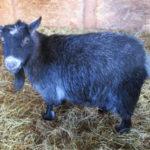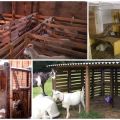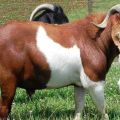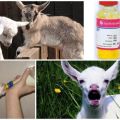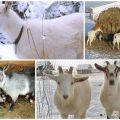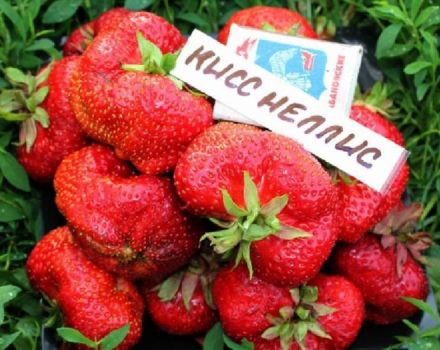Description of dwarf mini-goats and rules for keeping a decorative breed
Dwarf is an ancient African breed brought to Europe from the Cameroonian savannah by sailors-whalers. Today, miniature animals are common all over the world, but they are bred not so much for the sake of obtaining products, but as decorative pets. Dwarf goats are valued for their non-capricious care and nutrition, their ability to adapt to any climatic conditions, and low susceptibility to typical diseases of small ruminants.
Origin story
Since ancient times, the peasants of the central and western regions of Africa have raised small goats for milk and meat. When the time came for geographical discoveries and the colonization of continents, sailors often took dwarf animals on ships as live food. The unpretentious and compact animals were easy to keep, and the sailors always had milk and meat.
African goats arrived in Europe on whaling ships, merchant ships and warships. But the Europeans were interested not in the productive, but in the decorative qualities of animals. Cute goats appeared in German and Swedish zoos, aristocrats began to keep them as pets. Miniature goats walking on the lawns of noble estates have become a common sight.
Description and breeds of dwarf goats
Initially, there was a breed bred by African peasants - the Cameroonian pygmies. On its basis, Nigerian goats were created in the USA as a result of breeding work. It is difficult to distinguish between the representatives of the breeds, they are outwardly similar, and even cases of crossing of Cameroonians and Nigerians among themselves are not uncommon.
The standards for both dwarf breeds are shown in the table.
| External signs | Cameroon breed | Nigerian breed |
| height at the withers | 50-60 cm | 30-55 cm |
| torso length | 70 cm | 55 cm |
| weight | 30-35 kg | 20-25 kg |
| daily amount of milk | 1 l | 2.5 l |
| fat content of milk | 5,2 % | 6 % |
| production type | meat | lactic |
| head | triangular in shape, with a powerful skull | elongated, narrow, classic-shaped skull |
| horns | flattened-rounded, directed parallel to the ridge, lack of horns - breed defect | small, flattened, directed backward, the absence of horns is not a breed |
| eyes | rounded, with a square pupil, black or brown iris | rounded, with a square pupil, the iris is blue, brown or golden |
| udder | round, voluminous, with cylindrical nipples | oval, downward, with triangular nipples |
| genitals | conspicuous, dark brown | inconspicuous, gray |
| wool | medium length, with a developed undercoat, wild colors are common | short, slightly pubescent, common spotted and banded colors |
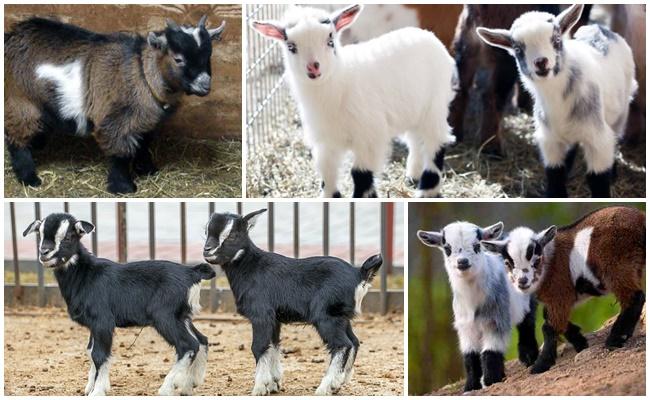
Dwarf goats are not capricious, they quickly adapt to both heat and frost. They are able to climb boulders and trees in search of food. But they are susceptible to dampness, they can catch cold. The character of dwarf goats is playful, lively. But animals are ill-advised, friendly, obey the owner. They have sufficient intelligence to be trainable.
They are neat and tidy, do not tolerate when their home is dirty and unkempt. Dwarf goat milk does not have a specific smell.
In addition to Nigerians and Cameroonians, there is a rare dwarf oberhazli - a hybrid breed obtained from crossing Nigerian and Swiss goats. A model of a courtyard has also been developed - a kind of Cameroon breed, whose representatives have small horns and twisted inward.
Pros and cons
The virtues of the Cameroonian pygmies:
- non-capricious care;
- resistance to typical diseases of cattle;
- high adaptability to environmental conditions;
- calm and friendly character;
- 2-4 cubs per litter;
- susceptibility to training.
Cons of the Cameroon breed:
- low milk yield, which is associated with meat orientation;
- the possibility of an allergic reaction;
- susceptibility of animals to dampness.
Both Nigerians and Cameroonians do not tolerate solitary confinement. To prevent the little goat from being depressed, you need to buy a few more individuals.
Pros of Nigerian Dwarf Goats:
- non-capriciousness in care and maintenance;
- disease resistance;
- friendly and lively character;
- high average daily milk yield;
- high fat content of milk;
- 2-4 cubs per litter.
Cons of the Nigerian breed:
- fragility of the skeleton and weak muscle mass;
- sensitivity to microclimatic conditions.
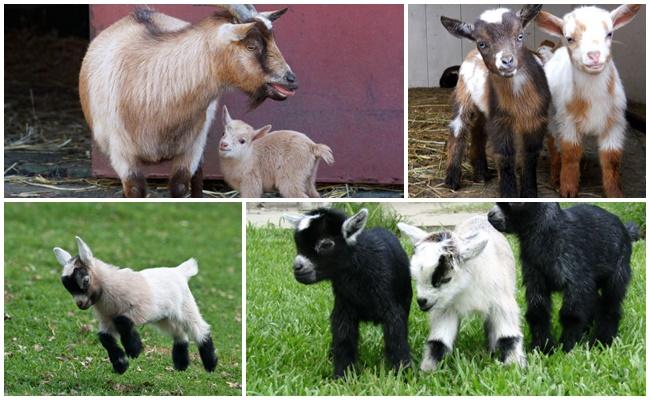
Rules for choosing good individuals
To buy a good and healthy mini goat, you should pay attention to:
- The seller has documentary evidence that the animal belongs to the breed.
- Growth. Even in the strongest and tallest individuals of the dwarf breed, it does not exceed 70 cm at the withers.
- Weight. If a dwarf goat weighs more than the standard, then it is obese, fraught with poor health and poor performance.
- Smell and taste of milk. The specific smell and taste are signs of the mixed origin of the goat.
The nuances of breeding and care
The barn should be warm and spacious. The area of space for one individual inside the room should be 0.8-1.2 m2, and the pen should be about 5 m2... In the pen, you should put driftwood, various elevations, so that the goats are interested in walking.
The floor in the stable is lined with straw, the aisles are lined with clay and gravel mixture. African goats belong to rocks, therefore shelves are attached to the walls on which the animals will sleep. Optimal microclimatic conditions in the stable:
- temperature - 16-18 ° C;
- humidity - 60%;
- daylight hours - from 6 am to 9 pm.
In the winter months, when the daylight hours are insufficient, lighting devices are installed. On frosty days, pets are not allowed out of the barn into the yard.
What and how to feed
Dwarf goats eat 3 times less than representatives of standard breeds.
The diet should consist of:
- hay;
- pasture;
- corn, oat, barley grains;
- dry foliage and twigs;
- forage legumes;
- vegetables;
- concentrated feed.
Do not treat goats with bread. To replenish vitamins and minerals, pets are given salt, algae for livestock, vitamin complexes. Goats are watered 2 times a day. The water is changed regularly. It should be lukewarm. It is poured into the drinking bowl either after the animals have eaten juicy feed, or before feeding with compound feed.
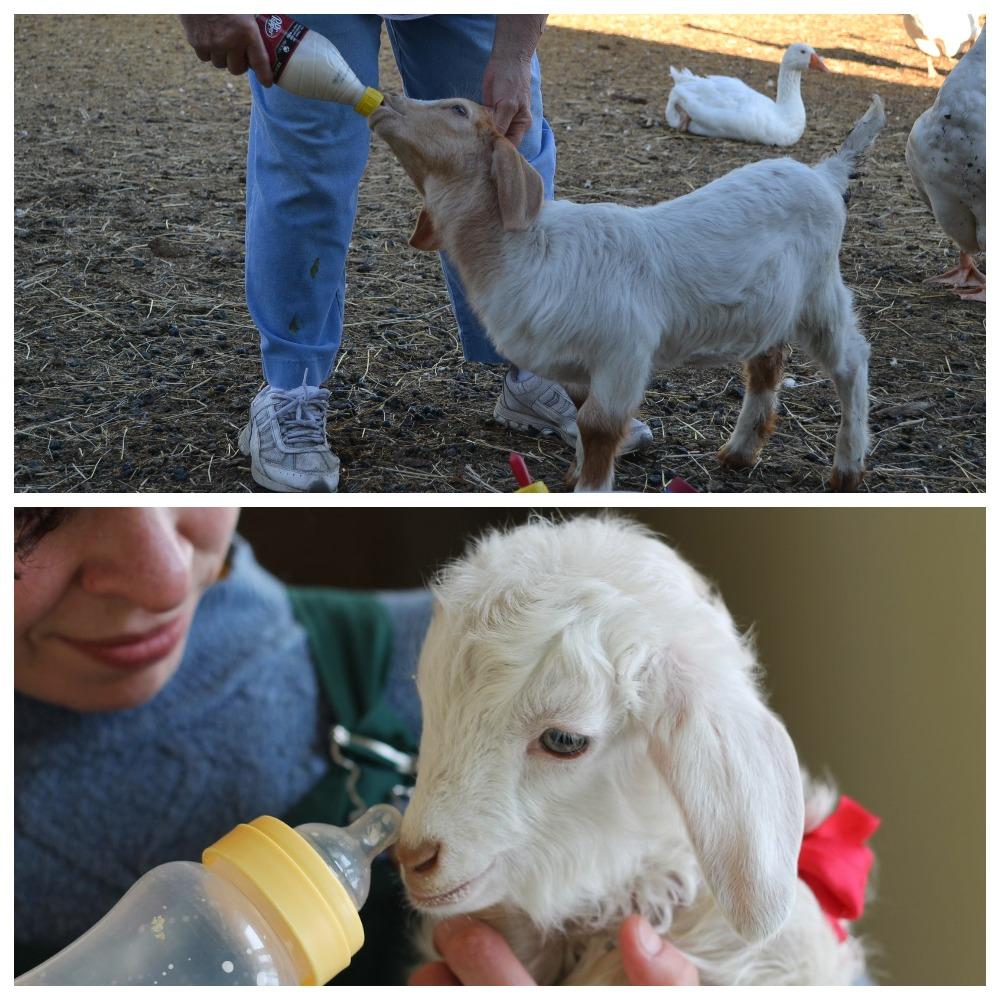
Adults
An adult dwarf goat should consume daily during the summer months:
- 2-3 kg of fresh grass for pasture;
- 500 g of hay;
- 200 g of concentrated feed.
In winter, when grazing is impossible, the diet of goats includes:
- 500 g of hay;
- 200 g grain feed;
- 150 g of vegetables;
- 200 g of compound feed;
- one branch of aspen with dry leaves.
Kids
The diet of dwarf kids is determined by their age. Newborn cubs up to a month old are fed 4 times a day: at 6, 11, 16 and 20 hours.
A kid up to 3 months old is fed as follows:
- before the 10th day of life - breast milk;
- until the 20th - hay, oatmeal, 5 g of minerals in the form of salt;
- before the 30th - bran, cake, crushed oatmeal, oatmeal, 10 g of minerals in the form of chalk;
- until the 40th - hay, bran, concentrated feed, chopped vegetables - all 50 g, 1.2 liters of milk;
- before the 50th - 75 g of concentrated feed, 100 g of hay with bran, 600 ml of milk;
- before the 60th - 150 g of hay, 130 g of compound feed, 70 g of chopped vegetables, 50 g of bran, 500 ml of milk;
- before the 70th - 150 g of hay, 180 g of compound feed, 100 g of chopped vegetables, 50 g of bran, 200 ml of milk;
- before the 80th - 200 g of hay, 250 g of compound feed, 100 g of vegetables, 50 g of bran;
- before the 90th day - 250 g of hay, the same amount of concentrated feed, 150 g of vegetables, 100 g of bran.
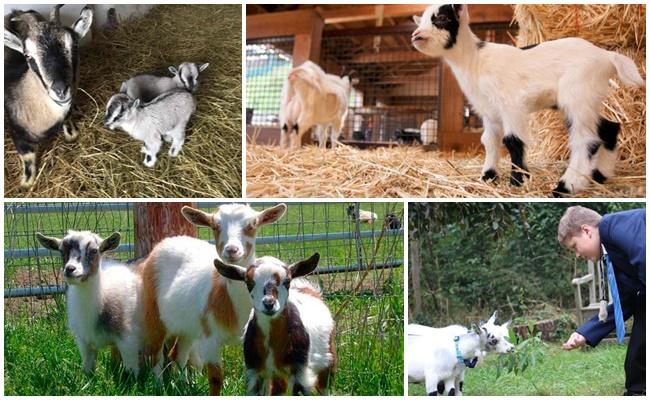
Then young goats are fed according to an adult diet.
Breeding subtleties
While in our country there are few dwarf African goats. There are nurseries, but they sell animals mainly for decorative purposes, so the livestock is small. There is a high probability of getting a pet born from a closely related cross, or a mestizo.
A dwarf goat is allowed to mate after it reaches 4 years of age. Although the representatives of the breed mature by 5-6 months, knitting animals at such an early age is fraught with problems with their health and bearing sick offspring. Most often, dwarf goats give birth to two kids. The cub weighs about 350 g. Despite its tiny appearance, it is strong and developed, it immediately grabs the mother's nipple, and after 3-4 hours it already stands up, gallops briskly.
Can I buy for an apartment?
Although dwarf African goats look cute, they get along with other non-aggressive domestic animals, they can be trained, but it is undesirable to keep them in an apartment. A pet can be taught to use a litter box, but it will often shit on the floor.
A representative of rock will briskly jump on furniture, climb on bedside tables and dressers, which not every owner will like. And goats are ruminants, so the pet will probably tear curtains, tablecloths, and duvet covers with its teeth. The owners, who nevertheless ventured to have a dwarf goat in the apartment, should make soft shoes for her so that the hooves do not knock on the parquet. For the pet, you need to equip a corner with a straw bedding.

